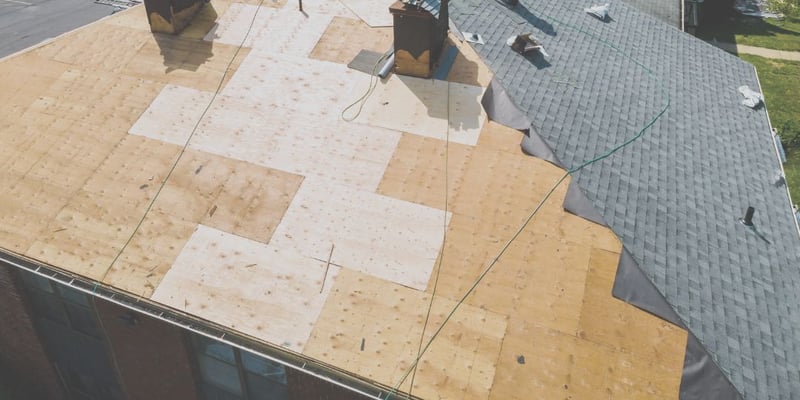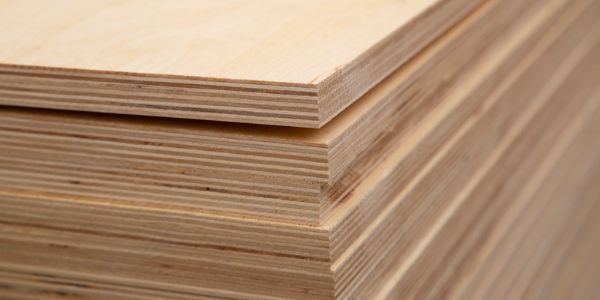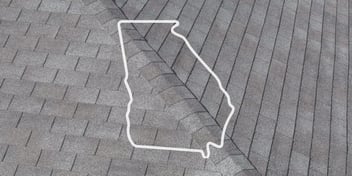- Home »
- Learningcenter »
- Plywood vs osb what is better for your roof
Plywood vs OSB: What Is Better For Your Roof?

When getting your roof replaced, there are a lot of things that you have to make decisions about. One of these is what material to use for the decking on your new roof. There are a few options here - but in this blog we'll take a look at plywood vs OSB.
What Is Roof Decking?
Your roof's decking (also called sheathing) is one of the most important structural components of your roof. The decking is the foundation connecting your roof to your home. Decking is attached to the trusses of your attic, and it covers the rafters and supports the weight of your shingles.
Two of the most popular materials for the decking used in roofing are plywood and OSB. While similar, there are some key differences between the two that will help inform you as you make the decision of which material is best for your roof.
What Is Plywood?

Plywood is a wooden sheet that is created by cross laminating layers of wood veneer (layers of wood peeled from a spinning log) and sealing them with a hot press. To increase the strength of the material, they use a process called cross-graining, where the grain of each layer is positioned perpendicular to the adjacent layer. Plywood is made from an odd number of layers so that there is balance around the center.
What Is OSB?

OSB stands for Oriented Strand Board, and it is an engineered wood panel similar to plywood - they major difference here is how it's made. OSB is made up of wood strands 8-15 cm long, that are then mixed with resin and interleaved together in thick sheets. The sheets are bonded together using heat and pressure. Since OSB is produced in large, continuous mats, it's a solid-panel product of consistent quality with few voids or gaps.
Plywood vs OSB - What's The Difference?
While the main difference between plywood and OSB is how they are manufactured, there are some other key differences between the two to keep in mind when choosing one over the other for your roofing project.
Cost
One of the biggest differences you'll see in OSB vs plywood is in the cost. OSB is typically significantly cheaper than plywood. In the current market, using a 4x8 sheet as an example - plywood will cost you roughly $10 a sheet, while the same size sheet of OSB will only cost around $6.
Weight
Another key difference between OSB and plywood is how much the finished product weighs. Because of they way it's manufactured, OSB tends to weigh significantly more than plywood does in comparison. . One 23/32-inch 4x8-foot plywood piece weighs roughly 67 pounds, while a piece of OSB the same size weighs 78 pounds. This is an important difference to be aware of - particularly in a roofing project. Because OSB weighs more overall, you are putting more weight on your roof supports.
Moisture Resistance
In terms of resistance to moisture, plywood has the edge. While OSB takes longer to become saturated when wet, it also takes significantly longer to dry. OSB also swells more when it comes in contact with water, especially at the edges. The reason for this is because when the wood chips are pressed into panels, the compaction stress is released. Plywood will return to its original thickness as the wood dries, but OSB will remain permanently swollen. Additionally, because OSB retains water longer than plywood does, it's more susceptible to decay from moisture.
Strength
OSB and plywood are very similar in terms of strength, but plywood is stiffer than OSB by a factor of approximately 10%. This doesn't cause much of a difference, but nails are screws are more likely to remain in place over time than they are in OSB.
Off-Gassing
- Plywood and OSB both off-gas formaldehyde, but OSB off-gases more. However, all engineered wood products that contain glue can be stored outdoors for several weeks before being used in construction so that the majority of the gas is vented safely outdoors, so ultimately the risk is minimal from either product as long as precautions are taken.
Environmental Friendliness
Another edge that OSB has over plywood is that it's widely considered to be a "green" building material. Because it's made of wood chips and utilizes the entire tree, it can be made from smaller diameter trees that are farmed. Plywood on the other hand, requires larger diameter trees that need to be harvested from old-growth forests.
Delamination
Another advantage that OSB has over plywood, is that plywood runs the risk of delamination. Because it's made up of layers, in humid climates, plywood can delaminate, which is where the layers begin to separate.
What's The Better Choice?
As with most comparisons we discuss in our blog, it's hard to say what the best choice is, as it depends on a number of factors. Plywood has the edge over OSB in many areas, particularly in its ability to dry out and return to normal after getting wet. OSB has the better price tag. Both materials are good options for roof decking, and if the process of reroofing is done correctly, neither material should cause you very many issues.
Questions About Roof Decking?
If you have questions about your roof deck, or if you are looking to get a new roof, call Colony Roofers today! We offer free 30 minute inspections, and we have a team of knowledgeable and dedicated professionals available to answer any question you may have about your roof.
 Call (678) 365-3138
Call (678) 365-3138


